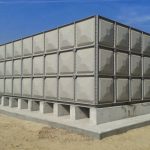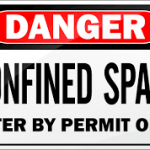Water Tank Hygiene Cleaning Regulations in Malaysia
Water tank hygienic guidelines
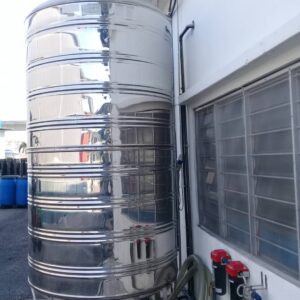
In Malaysia, the guidelines for water tank hygiene cleaning are quite comprehensive, focusing on ensuring both safety and efficiency. Key regulations and best practices include:
- Frequency of Cleaning: Water tanks should be cleaned at least once a year. However, more frequent cleaning may be necessary depending on the water quality and the presence of contaminants like algae and sediment.
- Pre-cleaning Procedures: Before starting the cleaning process, a full risk assessment should be conducted. This includes isolating the tank inlet, draining the tank, and inspecting it for any damage or corrosion.
- Cleaning Process: The tank should be thoroughly cleaned, removing all sediments, biofilm, and sludge. This can involve manual scrubbing and the use of vacuums to clean internal surfaces.
- Disinfection: Post-cleaning, the tank must be disinfected. Chlorination is a common method, but silver-stabilized hydrogen peroxide can also be used as an effective alternative. The disinfection process should ensure that all parts of the water system are treated, maintaining appropriate chlorine levels for sufficient contact time to eliminate bacteria such as Legionella.
- Documentation: It is essential to document every step of the cleaning and disinfection process. This includes taking photographs before and after cleaning, recording chlorine levels, and maintaining a log book of all actions taken and inspections performed.
- Safety and Compliance: Ensure that all safety standards are adhered to, especially when working in confined spaces. Workers should be properly trained and equipped to handle the cleaning and disinfection processes safely.
Best time frame for regular cleaning
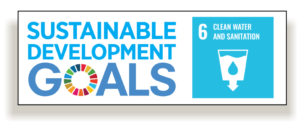
The recommended time frame for regular cleaning of water tanks is at least once a year. This annual cleaning is necessary to prevent the buildup of algae, silt, and other contaminants that can compromise water quality and safety.
However, depending on specific conditions such as water quality and environmental factors, more frequent cleaning may be required. For instance, if the water source is known to be particularly dirty or if there are visible signs of contamination, it may be necessary to clean the tank every six months or even quarterly.
Regular inspections can help determine the appropriate cleaning frequency, ensuring that any potential issues are addressed promptly to maintain safe and hygienic water storage.
The guidelines for the recommended time frame and procedures for water tank cleaning in Malaysia are supported by various sources:
- Water tanks should be cleaned at least once a year to maintain water safety and hygiene. They also note that more frequent cleaning may be necessary depending on the water quality and presence of contaminants.
- The steps involved in cleaning and disinfecting water tanks, emphasizing the importance of regular maintenance and inspections to determine the appropriate cleaning frequency.
- The need for regular cleaning to prevent the growth of bacteria and ensure safe water hygiene, recommending annual cleaning as a standard practice.
Malaysian authorities

The regulation and oversight of water tank hygiene cleaning are primarily managed by several local and national authorities. Key regulatory bodies include:
- Ministry of Health Malaysia (MOH): Responsible for public health and sanitation standards. They provide guidelines and regulations to ensure that water storage systems, including water tanks, are maintained to prevent waterborne diseases.
- National Water Services Commission (SPAN): Oversee water services in Malaysia, ensuring that water supply systems, including storage tanks, comply with the required safety and hygiene standards.
- Department of Occupational Safety and Health (DOSH): Regulate workplace safety, which includes the safety standards for workers involved in the cleaning and maintenance of water tanks.
- Local Municipal Councils: Enforce health and safety regulations within their jurisdictions. They conduct inspections and ensure compliance with the national guidelines set by MOH and SPAN.
Water tank cleaning and maintenance are typically regulated by local authorities, such as municipal councils and the Ministry of Health. These regulations ensure the cleanliness and safety of water storage tanks to prevent contamination and ensure the supply of safe drinking water.
Local authorities specify that water tanks should be cleaned at least once a year to maintain water quality and safety. This recommendation can vary depending on the water quality and environmental conditions, necessitating more frequent cleanings if the water source is prone to contamination.
The importance of regular water tank maintenance includes extending the service life of the tank, improving equipment performance, maintaining water quality, and reducing repair and replacement costs. Regular inspections, either dry or wet, are essential to identify and address potential issues like corrosion, peeling paint, or biological growth.
Malaysian penalties
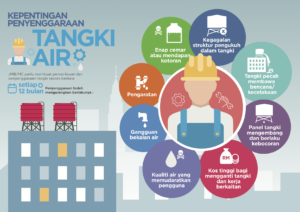
ailure to comply with water tank cleaning regulations can result in various penalties. While specific penalties may vary depending on the local authorities, common consequences include fines and legal actions for non-compliance. For instance, neglecting the regular maintenance and cleaning of water tanks can lead to violations of health and safety regulations, which may incur significant fines and other legal repercussions. This ensures that water quality is maintained to prevent public health issues such as waterborne diseases.
Moreover, local municipal councils and the Ministry of Health enforce these regulations to ensure the safety and hygiene of water supply systems. Regular inspections and adherence to these guidelines are crucial to avoid penalties and ensure safe drinking water.
Effective methods
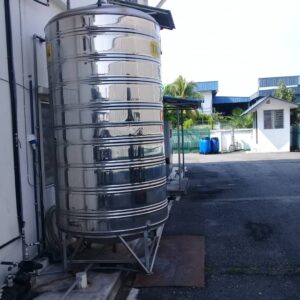
Here are three effective methods for cleaning water tanks:
- Manual Cleaning:
- Process: This involves physically scrubbing the interior surfaces of the water tank to remove biofilm, sediment, and other contaminants.
- Tools: Brushes, scrapers, and vacuums are typically used.
- Advantages: It allows for thorough inspection and cleaning of the tank’s interior, ensuring all areas are addressed.
- Disadvantages: It can be labor-intensive and may require the tank to be emptied and taken offline for a period.
- Chemical Cleaning:
- Process: Using chemical agents such as chlorine or silver-stabilized hydrogen peroxide to disinfect and clean the tank.
- Tools: Sprayers or injectors to apply the chemicals.
- Advantages: Effective in killing bacteria, algae, and other microorganisms.
- Disadvantages: Requires careful handling and proper dosing to avoid chemical contamination of the water supply.
- High-Pressure Jet Cleaning:
- Process: Using high-pressure water jets to remove dirt, sludge, and biofilm from the tank surfaces.
- Tools: High-pressure water jetting equipment.
- Advantages: It is efficient and less labor-intensive compared to manual scrubbing, and can quickly cover large areas.
- Disadvantages: May not be suitable for all tank materials due to the risk of damage from high-pressure water.

